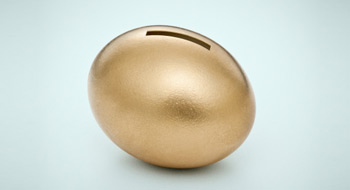
Something is amiss in the global economy. Unemployment remains high, and many developed countries struggle with high debt and a growing gap between the rich and the poor. And this is all occurring in an environment of artificial, historically low interest rates, where even a hint of higher rates or stimulus tapering causes jittery investors to rush to the exits. Some type of economic disruption is clearly on the horizon, but it’s hard to predict when things will return to normal. Gold offers wealth protection during the transition.
Because of certain myths about gold, most institutional investors in Canada and around the world are woefully underinvested in the precious metal. A key misunderstanding about gold is that its value is reflected in its changing price. In truth, gold simply holds its purchasing power. An ounce of gold will still buy the same number of loaves of bread it would have bought in Biblical times. Gold does not change in value; instead, currencies lose purchasing power against gold through currency wars and devaluation.
Price Check
Many trends are responsible for the change in gold’s price and desirability. Most of these trends—such as the global population’s growth and the movement away from the U.S. dollar as a reserve currency—have a common outcome: the increase of global debt. Over the long term, the price of gold and the level of government debt share a conspicuously close relationship. Other than short-term divergences, as we saw with the most recent takedown, the chart pattern for rising U.S. debt and the price of gold is nearly identical.
The price of gold declined by about 26% last year. However, this correction was healthy, because it allowed bullion banks to cover oppressive multi-year short positions and reposition on the long side. It also demonstrated easterners’ insatiable appetite for bullion. Deliveries of gold bars on the Shanghai Gold Exchange last year were nearly equal to the annual global mine supply.
Many investors may be caught off-guard as gold begins its next leg-up. This happened in August 1976, after a nearly identical two-year period of nerve-racking price retracement. Gold subsequently moved up 800% during the following three years.
Should You Buy In?
Nowadays, there are more ways to buy gold than ever: everything from jewelry and mining stocks to exchange-traded bullion. However, nearly all of these options are risky and therefore not optimal for insuring a portfolio. For example, mining stocks—owned by major Canadian pension funds such as the Canada Pension Plan and OMERS— lack liquidity during a crisis.
Gold bullion (for which a bar is held in allocated storage or in a personal vault, and the owner has documentation stating the weight, purity, serial number and assayer’s name) is the safest option. Ultimately, an investor needs to ask three questions when buying bullion:
- Is it authentic?
- Is the place I store it secure and free of third-party liability?
- Do I own it outright?
Buying gold bars will grow more complicated as supply tightens due to greater competition for available bullion. Another limitation of gold is that it does not produce an income on its own—nor does it offer any tax advantages—as other investments do.
Despite these drawbacks, gold provides liquidity, as well as a hedge against inflation and uncertain economic conditions. Recognizing this, some foreign pension funds are already investing in bullion. Now their Canadian counterparts, none of which have bought bullion yet, should follow suit.
Nick Barisheff is the founder, president and CEO of Bullion Management Group Inc.
Get a PDF of this article.
